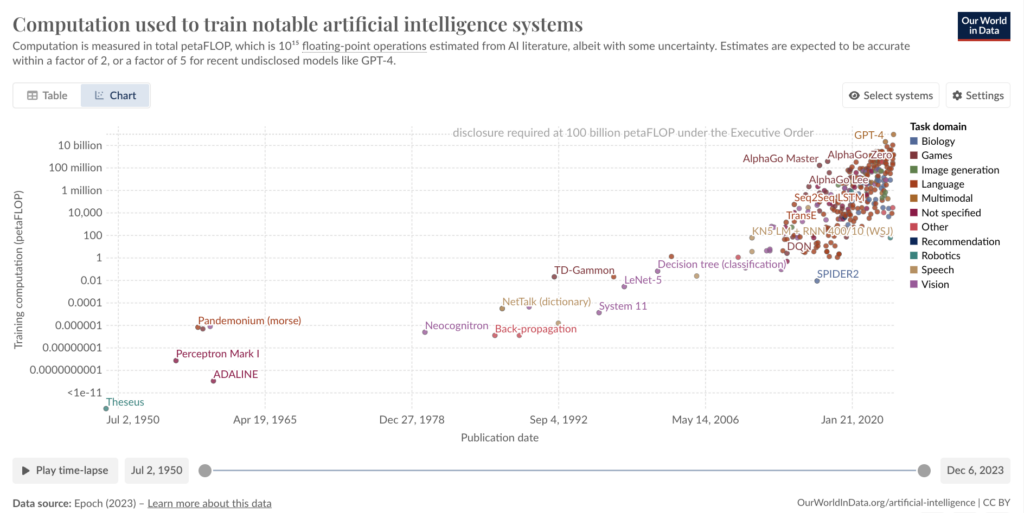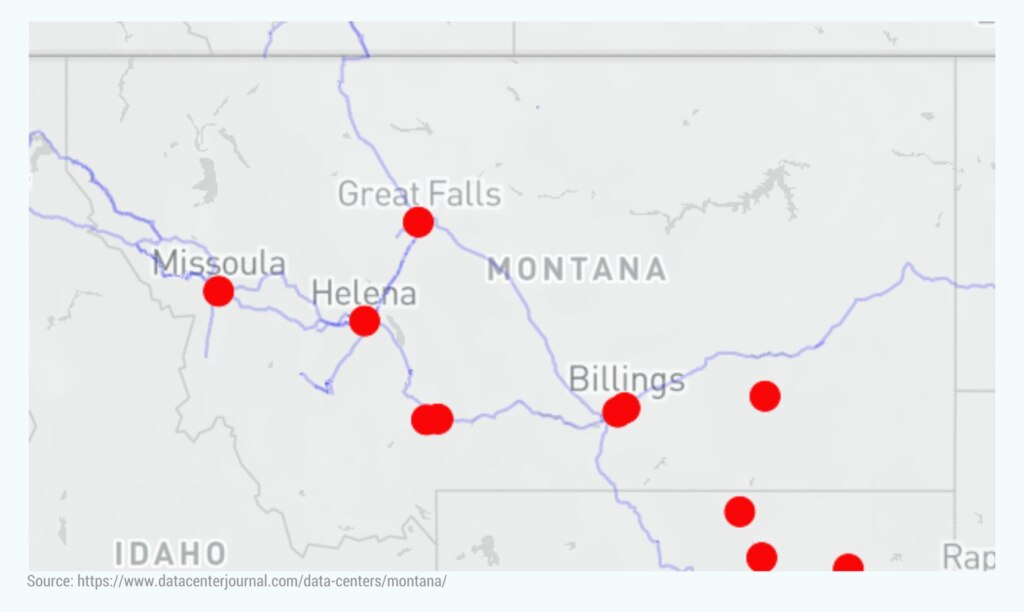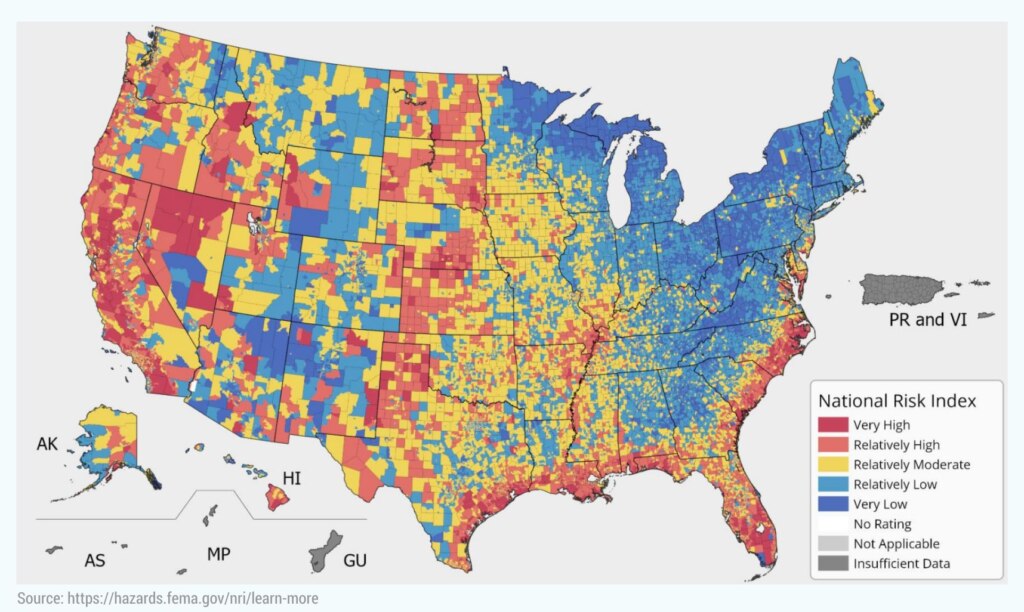Over the last 100 years, technological advancements have continuously challenged the status quo, fundamentally shifting how we live. While these changes have undoubtedly provided benefits to our everyday lives, Montanans have all too often been left behind as other states prosper from these innovations. The result has been a constant brain drain of our brightest minds to other states, economic decline and weakened communities.
However, it does not need to be this way. While the constant march toward technological progress will not cease, it does not require that Montanans continue to be left in the dust – but to do this it will require a change of approach.
The goal of the Montana 2050 Project is to assess the current and future technological landscape to identify opportunities that will enable Montana to lead the economy of the future.
The first of this series is focused on a booming industry poised to become the backbone of the economy in 2050: Data Centers.
Background
Every website, every social media post, every email sent – they all have to be stored somewhere. What used to be a relatively minor problem of steadily scaling up computer storage has now been thrust into overdrive as the use of cloud storage, AI and video media has skyrocketed over the last few years.
It is estimated that by 2025 the world will generate 181 zettabytes of data a year. To put it into perspective that is 181 with 21 zeros after it!

New and increasingly popular technologies that utilize AI systems like autonomous vehicles, machine learning models such as ChatGPT, or even creating that humorous AI profile picture all rely on accessing a massive amount of computational power to run complex mathematical algorithms over billions of different data parameters. The chart below shows how the need for computational power has increased over time.

The intensive computational power needed today is made available via Data Centers.
As AI technology becomes even more sophisticated, it promises to disrupt major industries and completely transform how people work and do business – making our economy heavily reliant on access to computational power provided by Data Centers.
Data Centers, the companies that set up designated facilities to provide the necessary computing and storage, have been racing to keep up with skyrocketing demand.

While most Data Centers are currently located in places like Silicon Valley, Northern Virginia, and other major cities, some have already chosen to build facilities in Montana. Montana currently has at least nine Data Centers within its borders.

While the current number of Data Centers in Montana is relatively small compared to other states, that could easily change. Increasing uncertainty about affordable and reliable power, skyrocketing land costs, concerns about natural disasters, unfriendly government policies, and hot climates may have Data Center operators beginning to look elsewhere for their next facility.
By leveraging affordable, reliable, carbon-neutral power; addressing barriers to transmission lines, fiber optics cables and CO2 sequestration pipelines; and providing greater freedom for innovative entrepreneurs; Montana leaders can build upon our state’s already favorable position and further leverage the current data gold rush, turning Montana into the national leader in Data Centers by 2050.
The Montana Advantage
Before we get into what Montana can do to position itself as the number one destination for Data Centers by 2050, we should first explore the things that already make the Last Best Place a world-class destination for computing.
1. Weather
Made up of stacked servers operating 24 hours a day, Data Centers generate excessive amounts of heat. These high temperatures pose a significant problem as current Data Centers typically aim to have a facility temperature between 64ºF-80ºF. To achieve this temperature, Data Centers invest heavily in cooling, which accounts for 40% of their total energy usage. Similarly, Data Centers must keep humidity levels within a certain acceptable threshold.
In the case of Montana, our dry, cool climate makes for ideal conditions for Data Centers, especially in comparison to the hot, humid climates that many Data Centers are currently being built in.
2. Natural Disasters
A significant component of a Data Center is reliability. One study found that the average cost of Data Center downtime was approximately $5,600 per minute. With the threat of devastating downtime always looming, Data Centers take extensive steps to mitigate risks or entirely avoid areas prone to hurricanes, earthquakes, tsunamis and tornadoes.
Luckily, Montana has a low risk of natural disasters, especially when compared to many of the current Data Center hubs. According to FEMA’s Risk Index for Natural Disaster, the majority of Montana has a relatively low to moderate risk of natural disasters.

3. Location
Montana is blessed to be situated between two major data center regions. The Pacific Northwest, which serves as a gateway to the Pacific region, and the northeastern U.S., which is not only a major hub itself but is also a gateway to Europe. Furthermore, Montana already has major fiber optic backbones passing through the state, making connecting with major metropolitan areas even easier.
The map below provides a snapshot of some of the major internet cable connections around the U.S.

4. Business Friendly
Over the last four years, Montana leaders have taken significant steps to increase our state’s competitiveness. Aside from Montana leaders’ rhetoric which embraces innovation and entrepreneurship, they have taken concrete steps to make it easier to do business in Montana. From increasing the business equipment tax exemption to restructuring the corporate taxes in favor of companies with in-state facilities, Montana continues to position itself as one of the best states in the nation to do business.
5. Land
Another major factor impacting where Data Centers choose to locate has to do with the availability of affordable land. While many current Data Center hubs struggle with skyrocketing land prices, Montana’s large geographic size provides ample opportunity for affordable land within reasonable distances of fiber and abundant power.
Montana’s Challenges
Montana must overcome several challenges if it is to become a major destination for Data Centers by 2050. The following are some of the biggest challenges:
1. Access To Internet
The majority of Montana does not have easy access to large fiber optic networks that Data Centers require. Even in areas with easy access to major fiber optic networks, Data Centers would likely still need to run miles of fiber optic cable just to connect their facility with these main fiber optic lines.
2. Access To Energy
While access to energy is a challenge, it is also an opportunity. Research demonstrates that Data Centers are increasingly looking for carbon-neutral electricity to power their facilities. Luckily for Montana, we have abundant opportunities to leverage wind, solar, hydro and geothermal. One of the largest Data Center operators, Meta, already utilizes Montana’s clean power, pulling power from Pryor Mountain Wind in Carbon County to power their out-of-state facilities.
The real problem then is not a lack of carbon-neutral power, but instead is problems regarding reliability, transmission, affordability and the permitting process.
Both wind and solar power tend to be highly intermittent, making them difficult to use for Data Centers that depend on 24/7 reliable power. Data Centers have struggled to meet their carbon neutrality goals while securing reliable power.
Not all sources of power cost the same. Maintaining low-cost energy is vital to successfully running a Data Center.
Transmitting power over long distances can be expensive and installation times can cause significant delays.
Under both state and federal permitting, energy projects – regardless of their carbon footprint – face significant permitting delays, followed by years of litigation aimed at stopping projects entirely. A vast majority of the planned and in-progress energy projects requiring the most stringent environmental reviews are clean energy related – often delaying and even jeopardizing these projects entirely.
Montana’s Opportunity
While Montana is already well positioned to become a major destination for Data Centers, Montana leaders can take steps to further solidify our position.
1. Protect The Right To Compute
Unfortunately, the development and use of AI driving new Data Center growth now faces numerous threats from overzealous federal and state regulators.
Often driven by outright fear of new technology, we see proposals to adopt sweeping licensing schemes and computational controls that aim to restrict the private use of AI and even calls for an outright moratorium on training new AI systems. In an attempt to address AI deepfakes, one misguided proposal from Congress would essentially result in banning memes, political cartoons, and other form of digital parody.
It’s important to remember the practical implications of such proposals. While AI does not come without risks, like any technology, ultimately AI systems are essentially just tools – a set of computers performing complex math. Restricting the use and development of computation in effect blocks people from using tools to perform math. When put in those terms, regulation of AI systems implicates people’s fundamental rights to think, express themselves, and make use of their tools (their property).
Montana could get out in front of regulatory threats and take steps to proactively protect people’s freedom to compute. Explicitly recognizing people’s right to utilize computational power as an aspect of fundamental rights to free expression and use of property would help shield those using and developing AI in Montana from the threat of heavy handed regulation.
An explicit “right to compute”, coupled with maximizing Montana’s natural advantages for locating Data Centers, would attract innovative businesses that either provide or rely on computational power from Data Centers to physically relocate to our state.
2. Reform MEPA
To make Data Centers possible, operators must have access to affordable, reliable power at their facilities. This not only necessitates power generation but also the ability to transmit that power to the Data Center. Furthermore, Data Centers require the extension of critical utilities, like fiber optic cables, to the site. However, these vital considerations needed to make a Data Center a reality can face years of permitting-related delays followed by litigation aimed at stopping the project entirely. To address this, Montana leaders could look for ways to prioritize streamlined, simplified environmental reviews for critical utility projects, as well as establish specific, objective permitting criteria that can reduce lawsuits.
3. Leverage Carbon Sequestration
Fossil fuels remain one of the most affordable, reliable sources of energy. By using carbon capture techniques to capture and sequester power plant emissions, these fossil fuel projects would be made effectively carbon-neutral, potentially making them more appealing to emissions-conscious Data Center operations.
Unfortunately, slow permitting times for carbon sequestration wells have made the roll-out of this technology slow, however, it doesn’t have to be this way. To jump-start this industry, Montana could follow the lead of Wyoming and North Dakota, and direct the Montana Department of Environmental Quality to apply to the EPA for state primacy over Class VI Carbon Sequestration Wells. By achieving state primacy, Montana could speed up the approval timeline for carbon sequestration wells from years to just a matter of months.
4. Avoid Expensive Pitfalls
Leaders should be careful to avoid pitfalls that cause expensive project delays and waste taxpayer money. One such example is the creation of government-owned networks.
Rather than looking to use taxpayer money to fund government-owned fiber networks – which have a long track record of failure – leaders looking to help in the fiber buildout should instead look for ways to make fiber buildout money go further by reducing fees and cutting unnecessary red tape.
The 2050 Vision
The decisions leaders make today will decide the Montana of 2050. By pushing for reforms that enable permissionless innovation we can help to make sure that the next Apple, Google or Amazon will be a Montana success story. With a little effort, we can ensure Montanans don’t get left in the technological dust, and secure our spot as the Last Best Place to compute.





